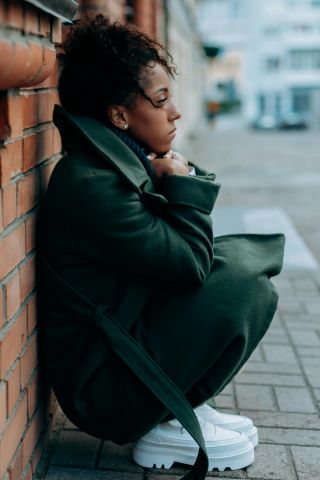Bias
Body Dissatisfaction Is Expensive
Appearance ideals hurt our wallets in addition to our well-being.
Posted March 28, 2024 Reviewed by Gary Drevitch

There are plenty of reasons to worry about body dissatisfaction. It’s common, it can lead to depression, anxiety, and eating disorders, and it can distract from other things you might prefer to focus on. Newly published research provides yet another reason to take body dissatisfaction seriously: It’s expensive.
Body dissatisfaction wouldn’t be so common if cultural appearance ideals were more flexible or realistic. Instead, appearance ideals are typically out-of-reach for most people, almost guaranteeing that when you compare yourself to the cultural standard of how you “ought” to look, you won’t measure up. After all, we can’t all be young, thin, smooth-skinned, and able-bodied. Appearance ideals also tend to reinforce racial and gender hierarchies. As the authors of this new research note, beauty ideals in the U.S. tend to be Eurocentric, and they tend to be especially damaging for women.
In this new study, a large group of researchers collaborated to examine the economic costs of falling short of appearance ideals. They focused on two key experiences: body dissatisfaction and appearance-based discrimination. Based on available data, the authors chose to examine two types of appearance-based discrimination: discrimination based on weight, and discrimination based on skin shade (sometimes known as colorism). Though skin shade discrimination, in which preference is shown toward individuals with lighter skin colors, occurs in many ethnic/racial groups, this study focused on the effects of skin shade discrimination for Black individuals living in the U.S.
The authors began by reviewing published data on the prevalence of body dissatisfaction, weight-based appearance discrimination, and skin shade discrimination. They considered the impact of these variables and the cost of each impact. For example, body dissatisfaction can lead to the development of an eating disorder, which has significant economic costs (e.g., expenses for treatment or the loss of wages). To capture these costs, the authors considered how many people in the U.S. have high body dissatisfaction, estimated what proportion of these people would develop an eating disorder primarily as a result of this dissatisfaction, then multiplied that number of people by the “cost” of an eating disorder.
The Cost of Body Dissatisfaction
The authors considered a range of outcomes stemming from body dissatisfaction, including depression, eating disorders, substance abuse, suicide attempts, smoking, and anxiety. Using the method described above, they estimated that body dissatisfaction in the U.S. cost $84 billion in 2019. (The authors used 2019 for their estimates to avoid the influence of the COVID-19 pandemic on their conclusions.) That $84 billion translates to nearly $2,000 for every person in the U.S. with severe body dissatisfaction. The biggest component of this cost came from body dissatisfaction’s contribution to depression and anxiety.

The Cost of Appearance-Based Discrimination
For weight-based discrimination, the authors again examined impacts like depression, anxiety, and smoking. However, they also included weight gain (because weight-based discrimination tends to make weight gain more likely) and the wage penalty (based on evidence that some employers discriminate against higher-weight individuals by paying them lower wages than thin workers). Based on studies suggesting that over 30 million people in the U.S. experience weight discrimination, the researchers estimated that the yearly cost of weight discrimination in the U.S. was $200 billion. For discrimination based on skin shade (which was estimated to affect 27 million people in the U.S.), the authors considered discrimination that results in lower wages for those with darker skin shades, but also factored in the impact of this type of discrimination on hypertension and depression. They estimated the yearly cost of skin shade discrimination in the U.S to be $63 billion.
Conclusions
Overall, the authors’ calculations indicated that body dissatisfaction and appearance-based discrimination result in higher costs for women compared to men, with two-thirds of the estimated costs hitting women. The economic cost of skin-shade based discrimination was borne primarily by people of color, especially women.
Research like this is important, but also has significant limitations. The analyses rely on estimates from pre-existing data sets, and these estimates may lack precision. Additionally, cost estimates undoubtedly failed to consider other types of significant costs to individuals, like cosmetic surgeries or spending on beauty products or diet-related products. In other words, if anything, the enormous costs of body dissatisfaction and appearance-based discrimination were likely underestimated in this study.
Both body dissatisfaction and appearance-based discrimination cause immense suffering, and that alone should be enough to make us care. But perhaps this new economic analysis will prompt more people to fight back against the tyranny of cultural appearance ideals and their downstream outcomes.


